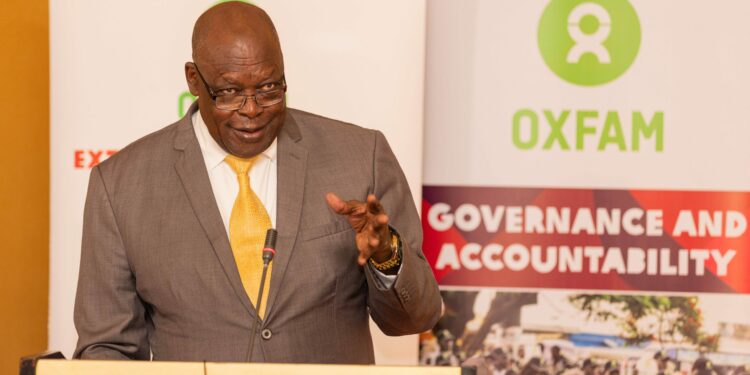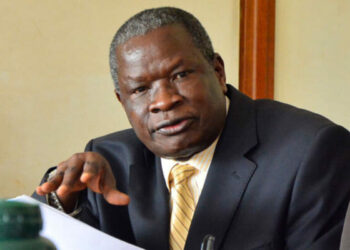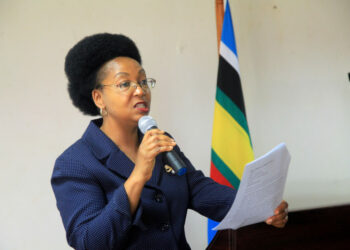In a significant development set to address Uganda’s unemployment challenges, the nation’s mineral sector is poised for a substantial boost in job creation, projected to increase by an impressive 63%.
Hon. Peter Lokeris, the State Minister for Mineral Development, has articulated this ambitious initiative, saying that this crucial sector will elevate the job count from 1.6 million in 2017/2018 to an impressive 2.6 million jobs by the fiscal year 2024/2025.
Lokeris made this announcement during a pivotal sensitization workshop on Uganda’s mining and minerals legal framework held in the capital, Kampala, on August 29th.
Emphasizing the nation’s substantial mineral potential, he highlighted Uganda’s favorable geological conditions, making it a prime destination for world-class economic mineral deposits.
Uganda’s mineral landscape has witnessed a surge in discoveries, including copper, nickel, gold, chromite, iron ores, tin, tantalite, tungsten, limestone, marble, graphite, gemstones, and rare earth minerals.
These findings have not only attracted substantial Foreign Direct Investment (FDI) but also transformed the sector. FDI in mining grew from a modest US$5 million in 2003 to an astounding US$800 million in 2017.
Furthermore, Uganda has reaped substantial non-tax revenue from the mineral sector, with license fees, annual mineral rent, and royalties contributing significantly.
These revenues escalated from approximately Shs1.8 billion in 2003 to an impressive Shs11.3 billion by the fiscal year 2022/2023.
The ambitious goals set forth by Uganda Vision 2040 envision the minerals sector as a key catalyst for employment generation and GDP growth.
Minister Lokeris underlined the importance of strategic planning and investments to harness the sector’s vast potential, which extends beyond direct revenue to encompass job creation and the stimulation of various economic sectors such as industrialization, agriculture, and human capital development.
The commendable rise in investments in the mineral sector is mirrored by a corresponding surge in the number of licenses granted by the government.
What started as around 100 mineral licenses in 2003 has burgeoned to an impressive 556 licenses by June 2023. This includes 249 exploration licenses, eight retention licenses, 48 mining leases, and 76 location licenses.
Minister Lokeris affirms that this surge in licenses is intertwined with a notable uptick in income and revenue from the mineral sector.
As Uganda marches boldly towards its goal of becoming a major player in the global minerals industry, the nation’s commitment to job creation and economic growth through mining remains unwavering.
Key Advancements in the Mineral Sector
Hon. Peter Lokeris unveiled a series of pivotal developments that signal a bright future for Uganda’s mineral sector. The government’s strategic vision encompasses the initiation of the Mineral Resources Infrastructure Development Project (MRIP) from 2023 to 2028.
This ambitious project’s primary goal is to establish critical infrastructure for effectively monitoring and regulating exploration and mining activities throughout the country.
In a bid to promote responsible mining practices, the government has forged collaborations with partners such as planetGOLD.
Their joint mission aims to reduce the usage of mercury in artisanal and small-scale gold mining, with a simultaneous focus on enhancing the well-being and health of local mining communities.
Uganda’s mineral landscape is evolving, with promising gold prospects emerging in various regions, including Buhweju, Mubende, Namayingo, Karamoja, and Zombo districts.
Notably, the Makuutu Rare Earth Project has estimated over 500 million tonnes of Rare Earth Elements (REEs) in Eastern Uganda. Experts believe that Makuutu has the potential to elevate Uganda’s global standing in REE production, trailing only China.
Meanwhile, Namekhara in Manafwa District has witnessed a significant increase in high-quality vermiculite reserves, soaring from 5 million tonnes to an impressive 54.9 million tonnes.
The government’s commitment to data-driven decision-making is evident through the completion of phase one of an airborne geophysical survey, covering the Karamoja and Lamwo region.
This marks a substantial milestone, filling a crucial 20% gap in the geophysical dataset across the nation. The ongoing efforts involve data interpretation and community engagement for on-ground follow-up activities.
Uganda has embraced digital transformation in the mineral sector with the establishment of the online mining Cadastre and Registry System and Transaction Portal in 2019.
These systems efficiently manage mineral rights, encompassing licensing, communication, reporting, and financial transactions. Presently, an upgrade to the online mineral licensing system is underway, aligning it with new regulations and ensuring transparency.
In December 2021, the Ministry launched the Artisanal and Small-Scale Miners (ASM) biometric registration, a pivotal move to streamline operations and boost revenue.
Future initiatives include zoning artisanal mining areas, formalization, regularization, training, and the provision of extension services to artisanal miners.
Enhancing transparency in the sector, Uganda has joined the Extractive Industries Transparency Initiative, providing a vital avenue for effective management of the mineral sector.
Do you have a story in your community or an opinion to share with us: Email us at editorial@watchdoguganda.com













